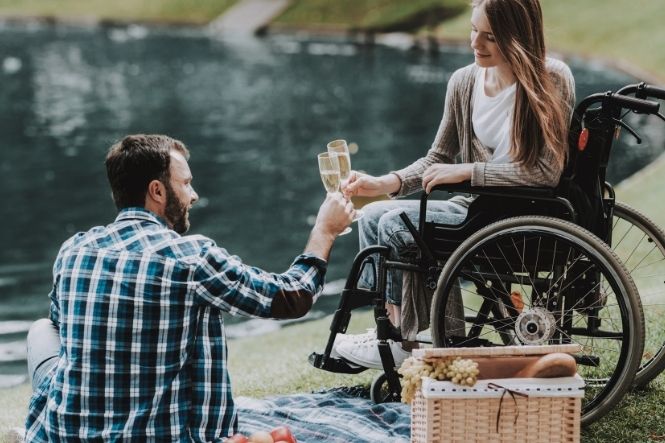When the weather is good, nothing beats a picnic out in the sunshine with friends or family. For many disabled people, though, managing at a picnic can present practical difficulties that make it off-putting. Taking simple steps to make it easier can enable you to relax and enjoy the event along with everybody else, with the focus on good food and fresh air rather than on problems.
Choosing a Location
Dealing with a disability can make it difficult to be spontaneous about picnic locations, but if you want to be surprised you can always check out a few beforehand and then let someone else do the planning. This is also a good idea if your favourite spots are likely to be crowded.
If it’s difficult for you to get far from transport, look for a location that’s shielded from a nearby road by trees or dunes, so that you can still enjoy that feeling of getting away from it all. Alternatively you can go to a park or a National Trust country property where there are good quality paths that make walking or using a wheelchair or mobility scooter much easier.
Most National Trust properties and many other privately managed destinations provide information packs about disability access and have adapted toilets for disabled people. Toilet access can be a problem in more remote locations so if you’re determined to go off into the wilds you should plan carefully around your privacy needs.
Seating
If you have a disability that makes it difficult for you to get up and down, or that makes it impossible for you to sit on the ground, sorting out appropriate seating is an important step. Most camping supply shops sell lightweight yet sturdy folding chairs that can be positioned securely on uneven ground. These are available in a range of different heights and can make life much easier, giving you more opportunity to move around as you please.
Many popular picnic venues have wooden picnic tables but these are not always ideal for disabled visitors. You may find it difficult to get your legs underneath them; sometimes it’s easier to bring your own chair to place at one end. The benches can be uncomfortable so think about taking a cushion or a coat that you can fold up and sit on.
Managing Food
If you have a comfortable seat but food is laid out on a cloth on the ground, it can be difficult to help yourself the way you want to. You may feel frustrated at having to wait for assistance and you may not want to trouble other people. Fortunately a lot of picnic food is fairly resilient, so if you bring along a clean grabber you can use it – gently – to pick up sandwiches and cakes. It’s easier if food has been prepared in advance so you don’t have to manage things like spreading jam.
Using a tray with a cushion underneath can help you to keep food steady on your lap and can enable you to eat without having to hunch over it. If you are using a camping chair you can get clip-on attachments for the arms to hold drinks in standard sized containers. If you have difficulty lifting drinks steadily you can use a long straw to make things easier.
Sun Safety
Of course most people planning picnics worry that it might rain, but if you have difficulty moving around, planning for the sun is still more important. Because you may be unable to move into the shade when you want to, it’s a good idea to take your own – a simple wide-brimmed hat can stop you overheating or turning red. You should also keep a shirt, shawl or light jacket within easy reach if you’re wearing short sleeves.
Planning in advance like this may seem like a nuisance but it quickly becomes habitual. You can then relax and enjoy your picnic without a care in the world.

